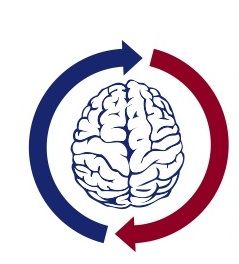
The SWF fostered a collaboration with two other foundations (The HHT Foundation and Angioma Alliance) and their researchers to apply for a Rare Disease Clinical Research Networking (RDCRN) Consortium Grant.
The Brain Vascular Malformation Consortium (BVMC) application was awarded the grant and joined a stellar group of non-for-profits utilizing a total of $117 million for research into their respective diseases. The BVMC funding goes directly to the researchers and their institutions with a nominal stipend to the SWF. The BVMC identified the cause of SWS in May 2013 thanks to the RDCRN funding. However, more can and should be done.
The Rare Diseases Clinical Research Network (RDCRN) started in 2003 and is currently in its second five-year cycle. The first cycle consisted of 10 consortia. The second cycle consists of 19 consortia (the DMCC is not included in this number as it is not considered to be a consortium). Currently, the RDCRN involves 171 institutions worldwide, collectively studying >200 diseases with 16586 patients enrolled in studies (as of January 2, 2013). There are currently about 90 patient advocacy groups. You can find more general information on the RDCRN and Brain Vascular Malformation Consortium (BVMC) in the PowerPoint linked here: RDCRN Automated PowerPoint Slides - BVMC.ppt.
WHY IS THIS IMPORTANT?
This will be the first large-scale 5-year study and tissue banking Sturge‐Weber syndrome with participants recruited at 5 of the 10 SWF Centers of Excellence and the Kennedy Krieger Institute SWS Center. The goals of the study are to establish a scalable, relational database to facilitate observational studies and clinical trials; to use urine samples to identify angiogenic mediators as markers for disease progression, and to use tissue and DNA samples for DNA analysis.
HOW DOES THIS RESEARCH BENEFIT ME?
The identification of markers for progression would improve patient surveillance and optimize management of the syndrome and prepare for the day when treatment trials will be developed. It is our sincere belief this study will also further drive research into emerging related clinical and scientific investigations and clinical trials. Ultimately, improving your quality of life is one of the reasons the SWF was founded in 1987.
SWS PROJECT AIMS
The aims were developed due to a hypothesis that SWS is caused by an early somatic mutation in a gene involved in angiogenesis.
AIM 1 Database Registry
The standardized database will uncover new insights on subgroups within SWS and enable important future studies to be planned and carried out by dedicated investigators.
AIM 2 Urine Sample
The urine sample will determine the ability of plasma and urine angiogenesis biomarkers to predict the severity of neurologic progression.
AIM 3 DNA Sample
The DNA sample will map and identify the somatic mutation causing SWS.
HOW CAN I PARTICIPATE IN THIS SWS STUDY?
If you or a loved one you care for have been diagnosed with SWS, you will be eligible to participate in this extremely important study.
THE REGISTRY PROCESS
Interested individuals diagnosed with one of these diseases and who are willing to participate in this vital research consortium are encouraged by the Sturge-Weber Foundation to contact the nearest participating clinical site to enroll. The participant will be asked to engage in as many as three critical aims for their diseases project. Patient information will be de-identified upon enrollment so scientists willing to study the data will not have access to your personal information. We can increase the pace of discovery by storing your anonymous personal information at the NIH Data Management and Coordinating Center (DMCC).
Register today at: BVMC Registry
We're counting on you to be counted!
The Brain Vascular Malformation Consortium (U54NS065705-06) is part of the Rare Diseases Clinical Research Network (RDCRN), an initiative of the Office of Rare Diseases Research (ORDR), NCATS, and is funded through a collaboration between NCATS, and the National Institute of Neurological Disorders and Stroke (NINDS).
January 1, 2013: Premier Issue of The Journal of Rare Disorders







